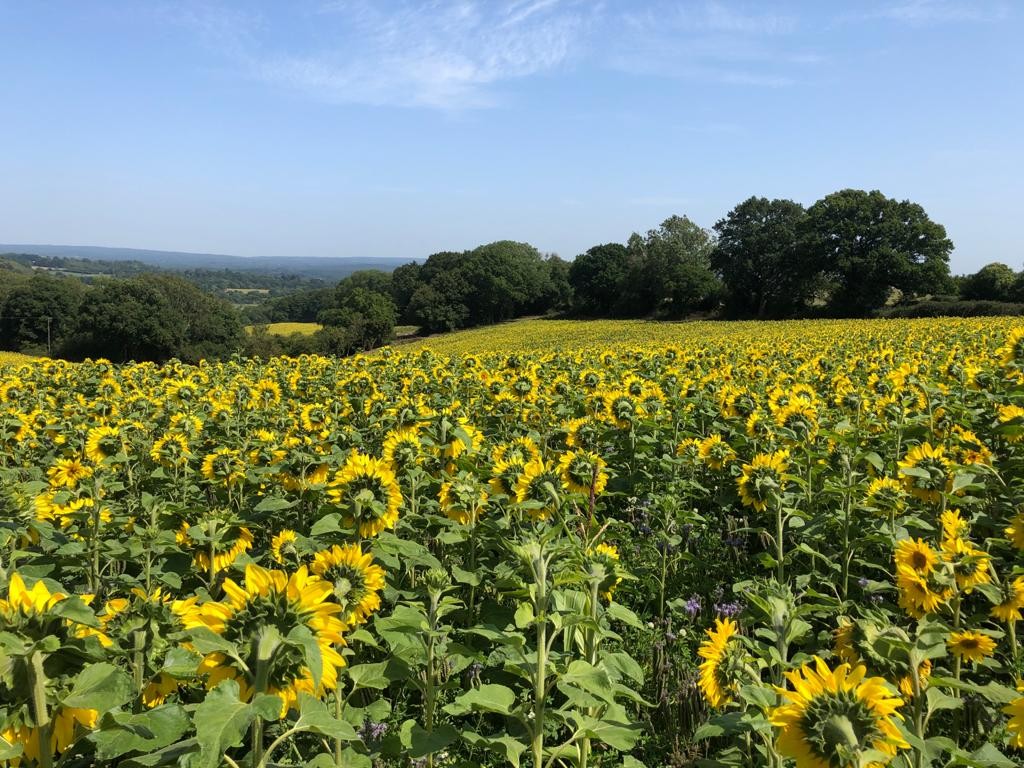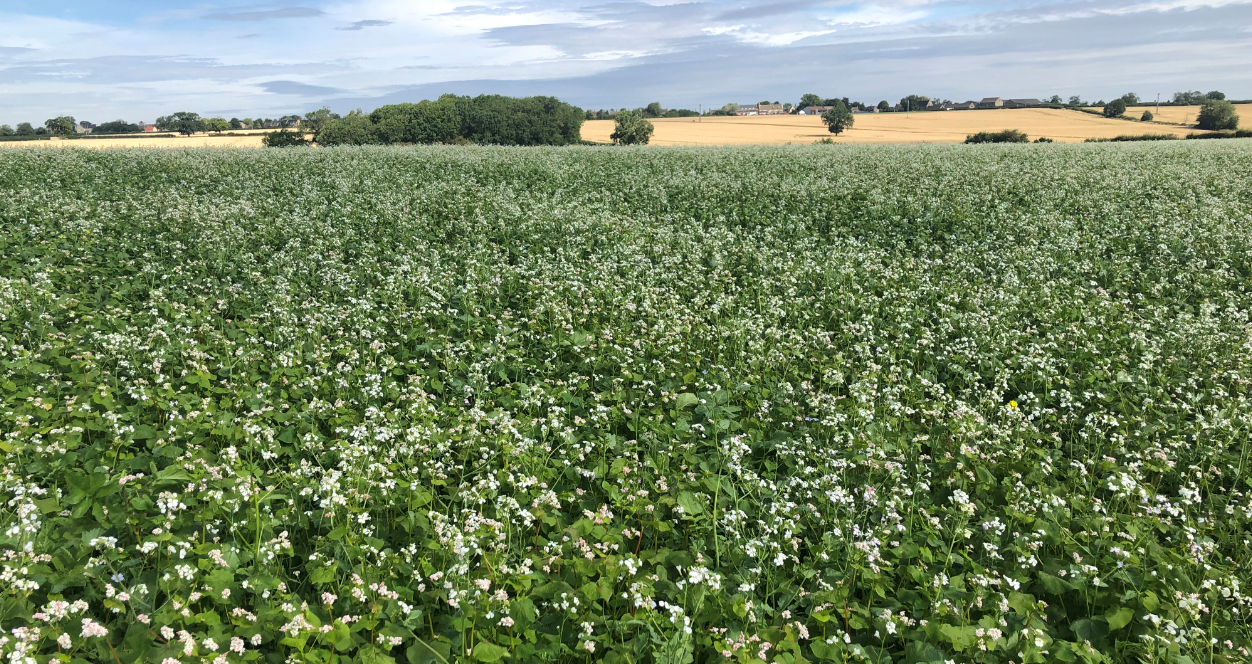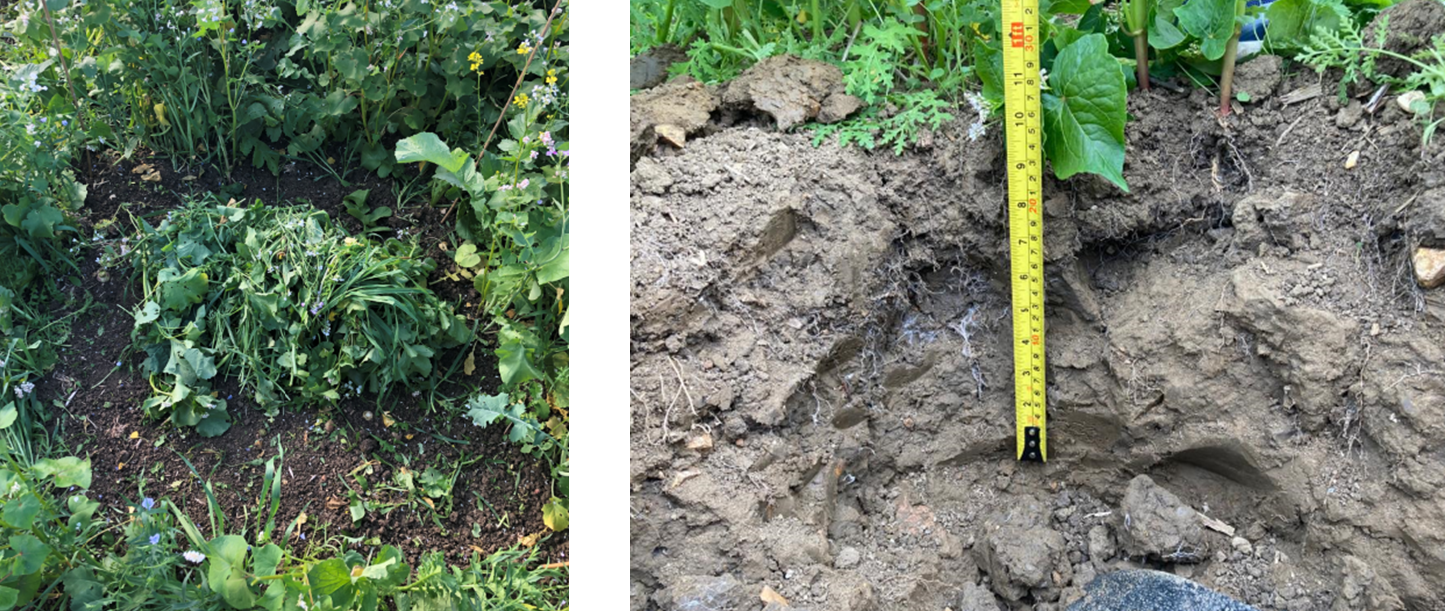Getting the best from your summer-sown cover crops
As a result of the dreadful winter weather, many headlands, fields and even blocks of land were unfortunately not fit enough for spring combinable crop planting. Growers were therefore faced with two options: leave the area bare and unplanted, or plant an economical green cover crop to harvest sunlight and convert that energy into valuable biomass for the soil.
Many growers opted for the latter and, as you look around the countryside there is now a wealth of summer fallow crops on display, with the likes of sunflowers and oil radish putting on quite the show.
As well as looking great, these crops are delivering the goods for pollinators and a vast army of 'workers' below ground too. The biomass they help to produce not only captures existing nutrients, but also provides a diverse array of root and leaf material that will be devoured by everything from visible earthworms to microscopic soil fauna. This helps to improve soil health, increase soil fertility and ensure fields enter the autumn months in good standing ready for winter cereal crops to be drilled.
So, while these cover crops are doing a stellar job now and looking great, how should you manage them over the coming weeks? If you're thinking of simply heading out with a mower or sprayer, there are several points to consider first...
What does the crop consist of?
The bulk of summer-sown fallow crops comprise quick growing species such as oil radish, phacelia and buckwheat, as well as annual legumes such as crimson clover, berseem clover and vetch.
Generally, these crops will establish promptly and bulk up at speed due to the prolonged day length and ideal growing conditions.
Consideration therefore needs to be given to the species present and their growth in terms of avoiding lignification and seed set. The former will lock up available nutrition as the woody material breaks down - anything 'stemmy' can cause issues with cultivators/drills and may result in 'hair pinning' where a direct drill is used. The latter is to be avoided wherever possible, regardless of following crops and any herbicide strategies that will remove volunteers.
When was the crop planted?
Any crops planted in June will soon be approaching the time for termination, or at least to be set back.
Crops planted in July will still have a few weeks worth of growth in them so don't rush to destroy them; they still have plenty left to give!
When is the land coming back into crop?
If the land is destined for oilseed rape then the crop should be destroyed. If you are looking to drill a winter cereal then there is potential to keep summer cover crops going for longer. That said, some may look to terminate these at the end of August to allow a chit of black-grass, for example. Where legume species are present in the fallow mix, the longer they can be left the more benefit they will bring.
Is the crop required for the Ecological Focus Area (EFA) catch crop option?
Some growers will have utilised the early entry point to get the most from their EFA catch crop option. If this is the case, it is important to remember that the following dates and mixture composition details must be adhered to in England, even more so given the recent announcement from George Eustice about the greening changes coming in 2021. Your 2020 Basic Payment Scheme (BPS) submission must be adhered to without question.
Crop destruction considerations and method
Crop destruction considerations and method
Before destroying your summer cover crops, something that is worth bearing in mind (and which is often overlooked) is public perception. I'm sure many of your crops will look quite exceptional right now and it's likely that their visual appeal hasn't gone unnoticed. For plots sited near to villages or alongside footpaths, think about the assumptions of locals who may be unfamiliar with the cropping process – it could come as quite a shock to see a wildlife haven suddenly being cut back.
Herbicide
This method tends to be most effective for destruction as it allows the crop to slowly fade away, giving any wildlife within it the chance to move on to other habitat over time. If you have any plots near to a public area that has the potential to cause conflict, consider retaining a strip adjacent to the village/gateway/footpath so some benefit can be retained for the wider environment.
Mowing
Choosing to mow your summer cover crops will ensure an effective mulching of the biomass and, with careful timing, in many instances it will result in the valuable regeneration of the sown species. Such regrowth will encourage deeper rooting and, in instances where legumes are included, you can benefit from further fixing of atmospheric nitrogen too.
Mowing also allows a clear target for final herbicide destruction, as grassweeds that may have been previously lurking underneath the crop canopy will soon come into view.
Of course, by its very purpose mowing is destructive, so always consider the presence of wildlife such as deer, hares/leverets and late-nesting game birds/reared poults that may be lurking within the crops. If you do have concerns, start the cut from the centre of the field outwards instead of targeting headlands first as this will allow wildlife to make an escape in good time.
Grazing
If it's a possibility, some growers will be planning to graze crops off. Often this is done prior to applying a herbicide, or stock is left to graze on the plant matter left behind after mowing.
Although many crops will be palatable to sheep and cattle, care must be taken to ensure crops are fit for grazing. Specifically, attention should be paid to the composition of the mix to ensure it is suitable, as well as assessing the bulk of crops to avoid the risk of bloat.
If you are unsure or have concerns, please consult your veterinarian for specific guidance on what crops can and cannot be grazed before allowing stock anywhere near.
Thinking about your options and reaping the rewards
With careful planning and consideration, the use of summer cover crops can bring greater benefits across than board than just being a quick fix for some bare ground.
Thanks to their positive impact for farming and the wider landscape, these crops can make a lasting impression – not only within your crop rotation but on anyone who uses our valuable countryside too.
With some crops having the potential to capture in the region of 80kg/ha of nitrogen - plus other key nutrients - and return upwards of 30t/ha fresh weight biomass, the relatively low spend on seed and establishment really could turn out to be one of your best investments of the year.
For more information about anything covered above, or if you'd like to speak to a member of the Kings team, please get in touch.
As a subscriber, you’ll receive email alerts each time a new blog is published so you can always stay updated with the latest advice and insights from our experts











Comments